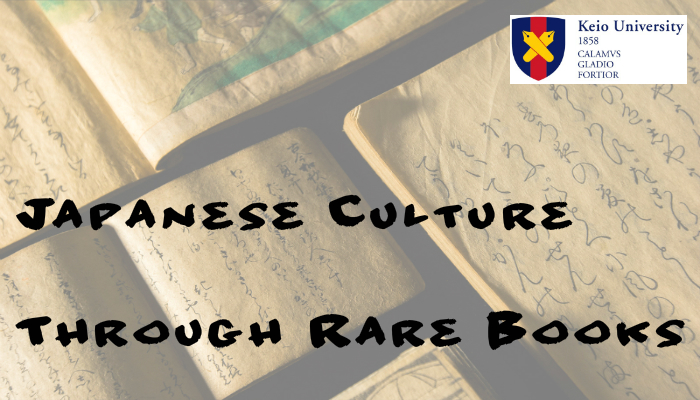Màu 54AAAA@Sự Kiện
6 năm trước
[Online] Khoá Học Miễn Phí Về Văn Hoá Nhật Bản Từ Đại Học Keio 2017
Keio University is a private, comprehensive higher education institution located on six campuses spread across the Greater Tokyo area. It offers an environment of academic and research excellence in a wide range of fields and includes a university hospital. Founded in 1858, it is Japan’s first modern institution of higher learning, and over the last century and a half, it has established itself as a leader in Japan through its continued commitment to education, research and medicine.
Keio has its origins in the school of Western learning established by Yukichi Fukuzawa, a school which soon evolved into a major centre of learning. As a highly respected educator and intellectual, Fukuzawa was one of the pioneers of modern Japan. He aspired for Keio to become a model and leader of society, stressing the importance of learning that is based on jitsugaku, or “science”. In today’s changing world, Keio upholds its founder’s spirit of science as it continues to fulfil his aspiration.
Course: Japanese Culture Through Rare Books
Explore the important roles that books have played in the cultural history of Japan.
Duration 3 weeks - 3 hours per week - FREE online course
Starts on 25 September 2017
Why join the course?
A book is a tool for preserving words and images. Through books, an abundance of information, including the knowledge and experiences of the people of the past, has been handed down to the present. But books are more than records of words and images. Their form, appearance, and even the scripts and styles used tell us about the fashions and technologies of the times that produced them. By studying old books, we can learn a great deal about the geographical areas in which they were made, the historical background, and the individuals and groups involved in their making.While displaying remarkable similarities with books produced in other areas of the Sinitic cultural sphere, Japanese books also possess some unique features, starting with their sheer diversity of form and appearance. Using a wealth of multimedia content, we will take a journey through the wonderful world of traditional Japanese books.
Keio University’s Book Collection
Keio University’s Institute of Oriental Classics is a unique institution specialized in rare East Asian books. The Institute’s extensive collection comprises 163,000 items and is open to the public as a specialized library. In this course, we will make use of this rich collection and rely on the expertise of specialists and researchers who have been working for the preservation and study of these resources. Using state of the art media resources, you will familiarize yourself with not only the content of traditional East Asian books, but also with their physical appearance, format, binding method, script, and cover style.
Learn about bookbinding styles and their influence on Japanese literature
In the first week of the course, you will be introduced to the main bookbinding methods used in traditional Asia, and to the practice of rebinding books. We will also discuss the influence of Chinese bookbinding methods on early Japanese books in all their various shapes and forms.
Explore old Japanese manuscripts and illustrated books in high-resolution images and videos
In the second week of the course, we will focus primarily on the different types of manuscripts and illustrated books that were used for waka (classical Japanese poetry) and prose tales (monogatari) from the 9th century through the 17th century. High-quality images and video recordings of materials in Keio University’s book collection and beyond will give you a real sense of the look and feel of these precious objects.
Discover the role of book publishing in the development of Japanese literature and scholarship
In the final week of this course, we will look at how the introduction of movable-type and woodblock printing in the 17th and 18th centuries helped books spread widely across social classes, and how this democratization of books affected Edo culture and learning.
Develop your interests in Japan and rare books
By the end of this course, you will:
- be inspired to further explore the field of rare books.
- have a good understanding of the various types of traditional Japanese books and their history.
- have developed a unique perspective on the origins and development of Japanese culture through book history.
- be familiar with the role of universities and research institutions in preserving and studying rare books and manuscripts.
What topics will you cover?
- How to handle old Japanese books
- Evolution of scripts and materials used in traditional Japanese books
- Binding methods and the practice of reformatting
- The hierarchy of book formats in traditional Japan
- Relationship between format and content in traditional Japanese books
- Genre and binding
- History of illustrated manuscripts and printed illustrated books
- History of printing and publishing in Japan
- Printed books and the development of scholarship in early-modern Japan
What will you achieve?
By the end of the course, you'll be able to...
- Explain how old Japanese characters evolved into their current format.
- Demonstrate understanding of the relationship between different binding styles, contents, and values of books.
- Describe how books affected the democratization of education in Japan.
- Investigate images from old books and identify the cultural and historical background of each image.
Who is the course for?
This is an introductory course and is open to anyone with an interest in the history of Japanese books. A basic knowledge of the history of Japan and Japanese literature will be helpful but is not required. The course makes use of a number of visual resources which may, unfortunately, make some of the activities not accessible to learners with visual impairment.
Course videos will be in Japanese with English subtitles.
Please go to the course link for further detailed information and enrollment:
https://www.futurelearn.com/courses/japanese-rare-books-culture?lr=100
957 lượt xem
